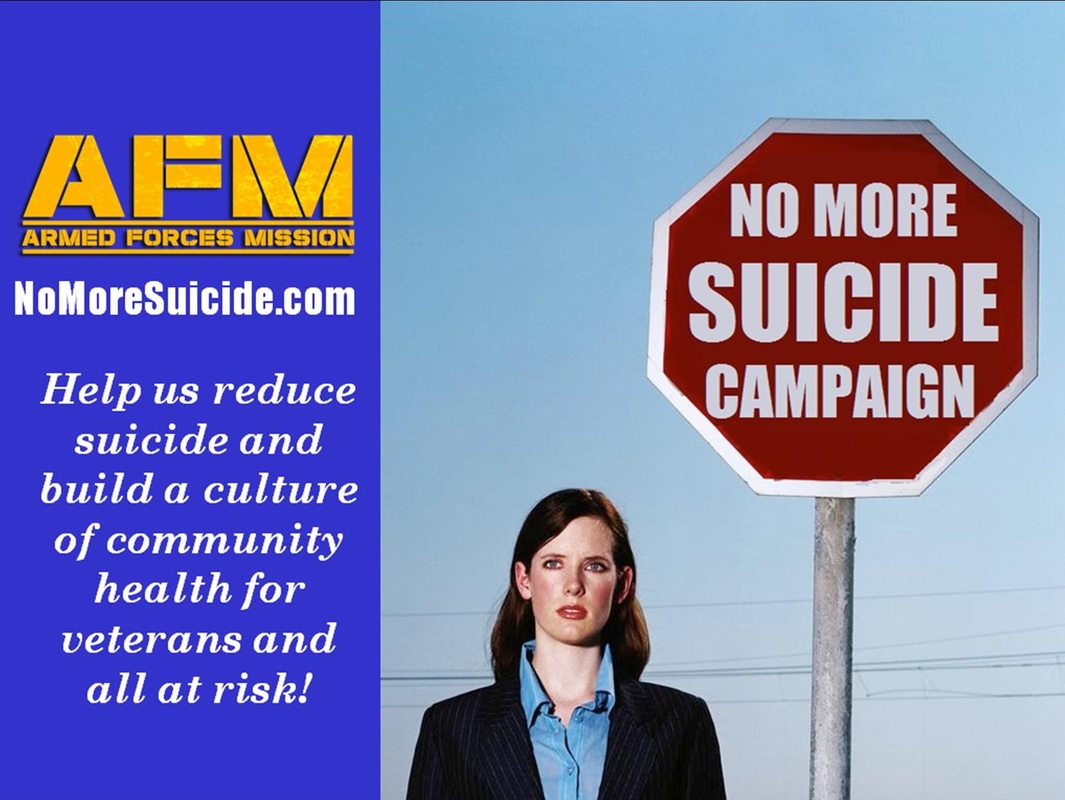|
Suicide is a national crisis. Through your support of the No More Suicide Campaign AFM is directly involved in suicide intervention of those at risk and training thousands to do the same. We are building a culture of community health through
Learn More
|
What to look for...
Risk factors can be those things over which an individual may have no control such as age, gender, ethnic group, family environment, place of birth, where a person lives.
Risk factors may also include the things that happen to a person over which they feel they have little control such as bullying, family history of suicide, physical or sexual abuse, diagnoses of physical or mental illness, availability of means to harm, alcohol or substance abuse, incarceration or loss of a job. Warning signs are often seen in the behavior of individuals; the things a person may say or do. Warning signs may include the following:
|
Protective FactorsProtective factors buffer individuals from suicidal thoughts and behavior and may include:
"Faith, family and the local gym where the three keys to rebuilding my own resilience and restoring my hope during the most difficult challenges in my life." Chaplain Kenneth Koon Thinking of suicide?
Call the National Crisis line 1-800-273-TALK(8255) |



